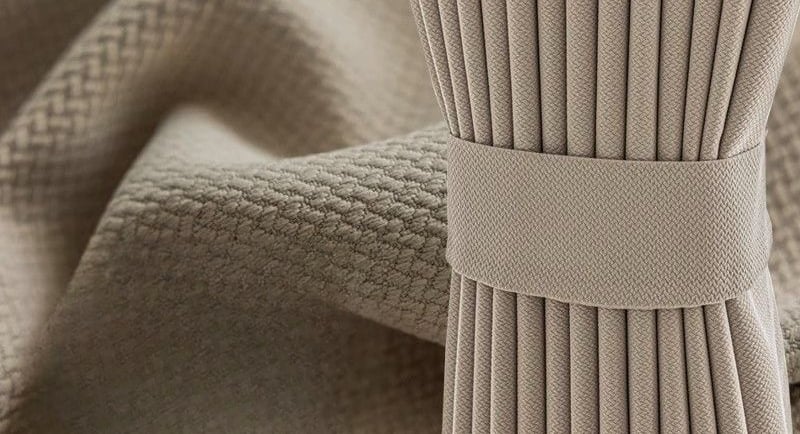Fabric Finishes for Enhanced Performance: Water Repellency, Stain Resistance, and More
11/27/20244 min read


Introduction to Fabric Finishes
Fabric finishes play a crucial role in the textile industry, contributing significantly to the functionality and longevity of various materials. These finishes refer to treatments applied to fabrics post-manufacture to enhance certain characteristics, such as durability, aesthetics, and performance. They serve multiple purposes, including improving resistance to environmental factors, making the fabric easier to care for, and enhancing the overall user experience.
Among the myriad of fabric finishes available, some of the most prominent include water repellency, stain resistance, flame retardancy, antimicrobial treatments, and UV protection. Each of these finishes addresses specific needs and enhances the fabric's usability across diverse applications, from fashion to upholstery and outdoor gear. For instance, water-repellent finishes allow fabrics to resist water penetration, thus ensuring comfort and protection in wet conditions. Similarly, stain-resistant finishes are designed to repel dirt and spills, making maintenance effortless while prolonging the appearance and life of the fabric.
The significance of fabric finishes cannot be overstated. In a world increasingly focused on performance and functionality, the demand for textiles that can withstand various challenges is ever-growing. Consumers seek fabrics that not only look good but also meet specific requirements for durability and ease of care. As a response, manufacturers are continuously innovating and refining the types of finishes they employ. This ensures that textiles remain relevant and competitive in the market. In this context, understanding fabric finishes is essential for consumers, designers, and industry professionals alike, as it informs choices that impact the quality and performance of the final product.
Understanding Water Repellency in Fabrics
Water repellency in fabrics plays a crucial role in their use, particularly in outdoor gear and performance clothing. The science behind water repellency relies on various technologies and chemical treatments that enhance a fabric's ability to resist moisture penetration. Typically, water-repellent fabrics are treated with hydrophobic (water-repelling) substances, which create a barrier that prevents water from soaking into the fibers. These treatments can be applied during manufacturing or as an after-treatment to finished textiles.
One popular method of achieving water repellency involves applying a durable water repellent (DWR) coating to the fabric's surface. DWR treatments are often silicone-based or fluoropolymer-based, enabling the fabric to shed water droplets effectively. When water encounters a DWR-treated surface, it beads up and rolls off rather than becoming absorbed. This not only keeps fabrics dry but also helps to prevent the weight of water from compromising performance in situations like hiking or skiing, where reduced weight can enhance mobility.
The benefits of water repellency extend beyond comfort and dryness. Water-resistant materials can significantly improve the overall lifecycle of fabrics by reducing the likelihood of mold and mildew growth, which can occur when moisture is trapped within the fibers. Furthermore, water-repellent fabrics are easier to clean, as they tend to repel stains and dirt. As a result, these textiles are increasingly incorporated into performance clothing, such as jackets and pants designed for outdoor activities, where exposure to the elements is commonplace.
In essence, understanding water repellency in fabrics assists consumers in selecting appropriate gear that meets their performance needs, ultimately enhancing their outdoor experiences.
The Role of Stain Resistance in Everyday Fabrics
Stain resistance is a crucial attribute for many everyday fabrics, providing a significant advantage in various settings. Common methods used for treating fabrics include chemical finishes like Teflon®, which create a barrier that prevents stains from adhering to the fabric fibers. This treatment not only helps in reducing the visibility of stains but also facilitates easier cleaning and maintenance, proving to be invaluable for consumers seeking longevity and practicality in their textile choices.
The benefits of stain-resistant fabrics extend beyond mere cosmetic appeal; they address the demands of fast-paced lifestyles where spills and accidents are common. For instance, in the hospitality industry, where spills from food and beverages are frequent, stain resistance is essential. Hotels and restaurants depend on these fabrics to maintain a professional appearance and enhance customer satisfaction without incurring significant cleaning costs.
Healthcare is another sector that heavily relies on stain-resistant materials. Medical professionals are often confronted with various substances that can stain garments, such as blood or other bodily fluids. Stain-resistant fabrics ensure that healthcare workers can operate effectively without the constant concern of damaging their clothing, thus maintaining a hygienic environment while reducing laundry frequency.
Apparel, particularly children's clothing, also benefits from stain resistance. Parents appreciate the ease of upkeep that these fabrics provide, allowing children to engage in various activities without the recurring need for meticulous cleaning. Furthermore, stain-resistant finishes might be incorporated into uniforms, ensuring that employees in sectors like education and retail present a tidy appearance throughout their workday.
Incorporating stain resistance in fabrics contributes significantly to durability and consumer convenience, making it a relevant consideration in various industries. The effectiveness of chemical finishes, paired with their practical advantages, underscores the importance of stain-resistant materials in enhancing everyday fabric performance.
Innovative Fabric Finishes: Beyond Water and Stains
As technology advances, the fabric finishing industry has witnessed significant evolution, leading to the introduction of various innovative finishes that go beyond the conventional capabilities of water repellency and stain resistance. These emerging trends address consumer demands for fabrics that not only withstand everyday challenges but also enhance performance through specific functional properties. Among these properties, odor control, UV protection, and antimicrobial characteristics stand out as key advancements that cater to modern requirements.
Odor control technology in fabrics is designed to neutralize unpleasant smells, often caused by sweat or environmental factors. This is typically achieved through the integration of specialized chemical agents or coatings that inhibit the growth of odor-causing bacteria, making these fabrics increasingly popular in athletic wear and outdoor gear. The application of such finishes enhances the wearer's comfort, extending the longevity of garments by minimizing the need for frequent washing.
UV protection is another critical finish gaining traction, particularly in the context of outdoor apparel. Fabrics treated with UV-blocking agents can significantly reduce skin exposure to harmful ultraviolet rays, offering consumers an added layer of safety during sun exposure. This finish not only aids in preventive health measures but also appeals to environmentally conscious consumers who prioritize sustainability in their fabric choices.
Antimicrobial properties further exemplify innovative fabric finishes, providing protection against bacteria and fungi that can lead to common issues such as mildew and staining. Utilizing advanced technologies, these treatments enhance fabric durability, thereby extending the lifespan of garments. As sustainability becomes increasingly important, these finishes also serve to reduce the frequency of laundering, contributing to water savings and lower energy usage.
In conclusion, as the textile industry continues to innovate, these advanced fabric finishes not only enhance performance but also respond to the evolving needs and concerns of consumers. By integrating features such as odor control, UV protection, and antimicrobial properties, manufacturers cater to a market that values both functionality and sustainability, ultimately shaping the future of fabric technology.
Curtains&Fabrics
Design,production,sales,service in curtain fabrics&curtians.
Quality
Products
sales01@anytextile.com
+8615968501933
© 2024. SHAOXING LEYAO IMPORT AND EXPORT CO.LTD All rights reserved.
